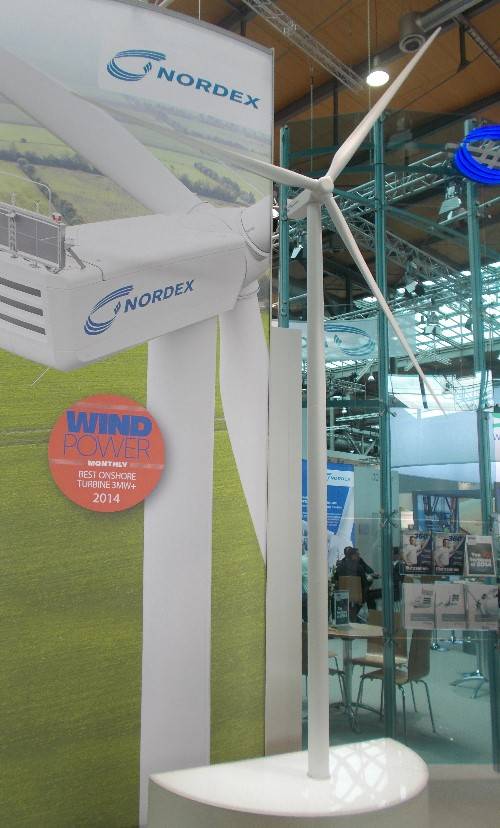Calculate commercial electricity costs - Calculate Now
The term green electricity is used to describe electrical energy generated from renewable energy sources. A wide variety of energy sources play a role in the generation of green electricity.
Nowadays, these are mainly hydroelectric power plants and wind power plants.
Biomass, biogas, solar thermal energy, solar energy and geothermal energy are also used as energy sources.
Another possibility are combined heat and power plants. However, this is not green electricity in the strict sense. Companies simply declare it as green electricity, although it is only a transitional solution for the phase-out of fossil and nuclear power generation.
Before we look at the exact production of green electricity, there is still the question of why one should actually purchase green electricity.
First of all, green electricity is more expensive than the electricity that can be obtained from power plants. The purchase of green electricity should be made solely from the perspective of climate protection and the rejection of nuclear power plants. So, in order to reduce the burden on the environment, it makes sense to opt for green electricity. The most important sources of green electricity today are hydroelectric and wind power plants. Common to both is the use of natural elements to generate electricity. The hydroelectric power plant is able to convert the mechanical energy of water into electrical energy. A stream of water drives a turbine, which in turn introduces mechanical energy by inducing torque into a generator. The generator converts the mechanical energy into electrical power and feeds it into the power grid.
The wind power plants and also wind turbines use the wind to generate green electricity. Wind energy is one of the renewable energies. The kinetic energy of the moving air masses is converted into electric current and fed into the power grid. Since wind is not continuously available, wind power plants are nowadays mostly used to support small power grids (villages). Normally they have to be supported by other energy sources, because they are not able to supply a power grid continuously. However, from the point of view of climate protection, these plants are optimal. Other important sources can also be used to generate green electricity.
These include biogas, for example. Biogas consists of a mixture of methane and carbon dioxide. The biogas can be used as fuel for combined heat and power plants to generate electricity. Unfortunately, biogas is still too unprofitable for companies in Germany today, so they are only thinking about feeding it into the natural gas grid. However, since biogas is continuously available, unlike wind and water, it could be an alternative in the future to support the power grid in addition to other energy sources.
Biomass is also an important factor for the future generation of green electricity. This is organic material. This material includes dead organisms, decomposed products and metabolic products. In biomass, energy is stored biochemically. This energy can be used to generate electricity. Since biomass consists of organic material, this raw material can constantly grow again and will be available for a long time.
In many private households nowadays, solar thermal energy plays a role in supplying the household electricity grid. Here, too, we are talking about green electricity. Here, the thermal energy of the sun is used to generate green electricity. Unfortunately, not enough kilowatt hours are generated to live independently of electricity providers. Solar collectors (e.g. on the roof of a house) "collect" the energy of the sun and feed the generated electricity into the existing grid.
Another renewable energy source is the field of geothermal energy or geothermal heat. In a certain part of the earth's crust energy is stored in the form of heat. This energy is made accessible and available and then used to generate electricity. Often a combined heat and power plant is used here. It is an energy conversion plant and can convert any energy source into electricity.
If one has to make a future prognosis, then one should state that mankind in general is not yet ready from a financial point of view to convert its power grid completely to green electricity. As long as this is not the case, a great relief of the environment, at least on this basis, is not yet possible.
Basic knowledge of natural gas
Natural gas is an important energy source and a combustible natural gas. Natural gas is a gas mixture consisting mainly of methane. Furthermore, gases such as propane, ethane and butane occur in this mixture. Since natural gas is produced in the same way as crude oil, these two raw materials are often found at the same time.
Microorganisms, algae or similar microorganisms die and sink to the bottom (especially in the ocean area). After thousands of years, different soil layers have covered the sunk material. One consequence is the development of strong pressure, high temperatures and air exclusion. The decomposition of the organic material, mainly by metabolic processes of bacteria, allow the formation of natural gas.
For the processing of natural gas, one must first find so-called natural gas fields. However, it is also possible to extract natural gas alongside oil production (as a by-product). From these natural gas fields, the natural gas is extracted from the ground into containers with the help of pipe systems.
In order to use natural gas, the physical properties of a gas mixture are exploited. By "applying" a high pressure, the gas can be compressed to such an extent that it is liquefied. In this liquefied form, the natural gas is wonderfully usable as a mineral oil or fuel substitute.
Nowadays, a particularly important topic is the propulsion of vehicles with natural gas. The conversion of a vehicle to natural gas is very high from the point of view of fixed costs, but after a few years the purchase is profitable due to the low natural gas prices. Currently, the cost is 50- 60 cents per kilogram of natural gas refueled (equivalent to about 1, 5 liters of gasoline).
However, the most important factor for the use of natural gas is environmental protection. Compared to other fossil fuels, natural gas burns with the formation of fewer pollutants. Nevertheless, it should be noted that the processing and transportation of natural gas releases methane, which drives the greenhouse effect.
Topics: economy & Power Engineering & Business & Electricity



